
Eoneren/iStockPhoto / Getty Images
It’s easy to forget that tourists contribute to climate change in a substantial way. So can you satiate your travel bug while minimizing your impact on the environment? This package will help answer that question with tips and ideas on how to be a better traveller.
Table of contents • The environmental impact of travel • Packing sustainably • Eco-friendly destinations • What about carbon offsets? • Once you've arrived • Further reading
The environmental impact of travel
It’s a big world, but many of us flock to the same places. Of the 1.4 billion international tourist trips that people took in 2017, half a billion of them were to the 300 most popular cities, according to the World Tourism and Travel Council. Shanghai, Beijing, Paris, New York and Orlando were the five most popular destinations.
Many destinations have already made efforts to combat overtourism. In August, the Italian government announced it would be rerouting cruise ships from the central part of Venice, and earlier this year Venice council voted to impose an entrance fee for visitors to help pay for the upkeep of the much-visited World Heritage Site. Amsterdam removed its iconic “I Am Amsterdam” sign due to overcrowding in 2018. The city has also limited Airbnb rentals and has banned new tourist shops from opening in the city centre.
Cities found to be most at risk of suffering the damaging effects of overtourism are Cairo, Jakarta, Delhi, Bangkok, Bogota, Mumbai, Moscow, Kuala Lumpur, Istanbul, Manila and Ho Chi Minh City, which were all singled out in the report as having inadequate resources for dealing with tourism growth.
By the numbers
22 Tonnes
Amount of greenhouse gas the average Canadian produces each year, according to a report by Climate Transparency, a coalition of international climate organizations.
1.294 Tonnes
Amount of greenhouse-gas emissions produced by a round-trip flight from Toronto to Vancouver.
83 per cent
Amount that CO2 emissions from international aviation have increased since 1990, according to the David Suzuki Foundation.
25 per cent
Amount of a plane’s emissions caused by takeoff and landing. Flying nonstop is better.
17 per cent
Estimated reduction in the number of loads of laundry washed by hotels that request guests reuse their towels instead of using fresh ones each day, according to the American Hotel and Lodging Association.
150 Tonnes
Amount of fuel a mid-size cruise ship, carrying approximately 2,800 passengers, can use each day, emitting as much particulate matter as 1 million cars, according to Nature and Biodiversity Conservation Union, a German environmental association.
2 per cent
Amount of the world’s carbon emissions caused by global air travel.
23,000
Amount of plastic bottles Marriott International expects to save each year, on average, for a 140-room hotel by replacing individual soap, shampoo and conditioner bottles with bulk dispensers in its showers.
Train, plane, car or bus?
How much carbon dioxide do different modes of transportation produce, per passenger, for each kilometre?
- Train (156 passengers): 14 grams
- Small car (4 passengers): 42 grams
- Average car (4 passengers): 55 grams
- Bus (12.7 passengers): 68 grams
- Plane (88 passengers): 285 grams
(Source: European Environment Agency)
Editor’s note: This chart has been updated to include the number of passengers for each mode of transportation. The carbon dioxide are per passenger.
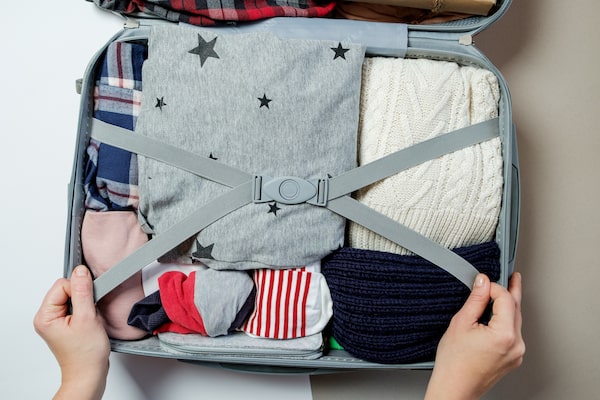
boyarkinamarina/The New York Times
Packing sustainably
“Everything we take – and leave behind – has a footprint. The trick is to do more with far less,” says zero-waste advocate Lauren Singer. She has lived a zero-waste lifestyle for eight years and owns the popular Package Free Shop in Brooklyn, N.Y. Here are some of her ideas on how to cut down your travelling weight.
Carry-on always
Good options include Patagonia’s Black Hotel duffel, which is both sustainable and fair trade – it uses a zero-wastewater discharging system, meaning wastewater from manufacturing the bag is treated so nearby waterways are not polluted. Singer also advocates for buying luggage with a lifetime warranty, which improves the odds that a bag will be repaired rather than thrown in the trash.
Minimize toiletries or make your own
Look for toiletries that are organic and sustainably sourced and that come in biodegradable packaging. Shampoo and conditioner bars are a great way to minimize plastic use while travelling. David’s Natural Toothpaste is free of sulfates and comes in a recyclable metal tube. Its box packaging is paperboard made using renewable wind energy. Singer makes her own organic, vegan toothpaste. Her recipe calls for 2 tablespoons of organic coconut oil, 1 tablespoon of baking soda and 15 to 20 drops of organic essential oil, such as peppermint or anise. If you’re a snorkeller or scuba diver, make sure your sunscreen is reef-friendly. Agent Nateur makes organic, all-natural deodorants for both men and women from sources that are non-toxic nor environmentally harmful. Plus, they come in metal containers instead of plastic.
Pack snacks, reusable bottles and utensils
Bring your own food in organic cotton bags or beeswax wraps. Singer says bamboo is an ideal replacement for plastic and the sturdy material can be moulded into reusable coffee cups, straws and utensils. Wet wipes have become a travel essential, but are not flushable and clog sewers. Replace them with biodegradable tissues. And don’t forget to bring a cloth shopping bag to pick up groceries, take to the beach or store dirty laundry.
Go solar-powered
Eliminate the need to bring along a cache of cords to charge your electronics and try solar-powered chargers, which are ideal for daytime charging and short-term needs. They’re also perfect for adventure travellers who might not be near electrical outlets. Popular options include the Nekteck solar charger, Anker solar charger and Goal Zero Venture 30 solar power recharger kit.
Eco-friendly destinations
From Aruba to the Arctic, these destinations are making environmental practices part of their appeal.
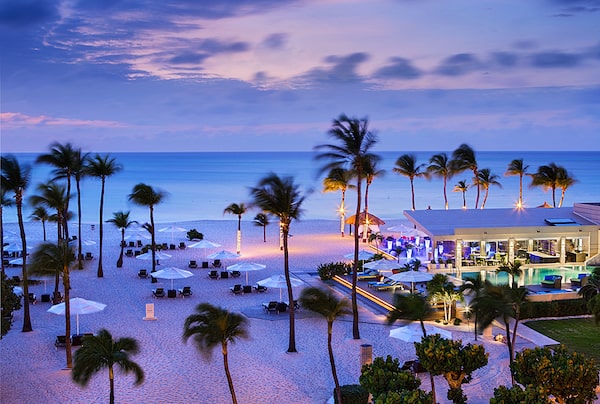
Island escape
Aruba’s Bucuti & Tara Beach Resort sits on 14 acres of beautiful white sand beach. Named the world’s most sustainable hotel by Green Globe, a Los Angeles-based sustainability certification agency, Bucuti & Tara became the Caribbean’s first carbon-neutral resort last year. Thanks to the largest solar panel installation the government of Aruba will allow, energy-efficient appliances and purchasing carbon offsets from a local wind farm, the resort has been able to reduce its greenhouse gas emissions to net zero. Guests are provided with a reusable water canteen, and are invited to participate in monthly beach clean-ups.
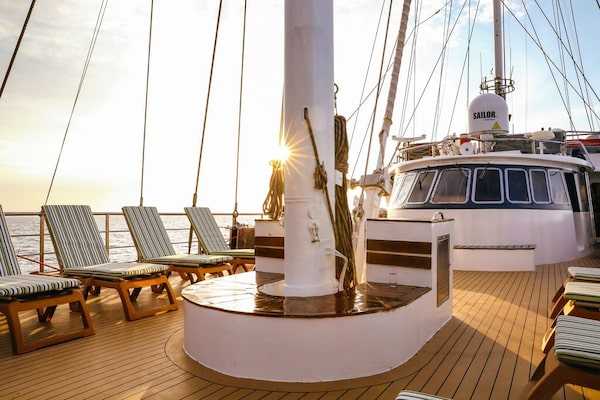
Sustainable cruising
With demand surging, the cruising industry has come under fire for its environmental impact. Intrepid Group, an Australia-based company that operates several brands, including Peregrine Adventures, has been carbon neutral since 2010 thanks to carbon offset projects. Their nine-day sustainable cruise to Thailand, for example, takes passengers to small islands off the west coast, where you can swim in the Andaman Sea and then dine with locals in villages. To promote sustainable cruising, Peregrine uses smaller boats that each accommodate a maximum of 50 passengers. The company banned all single-use plastics from its cruises, and sources 90 per cent of each trip’s food locally.
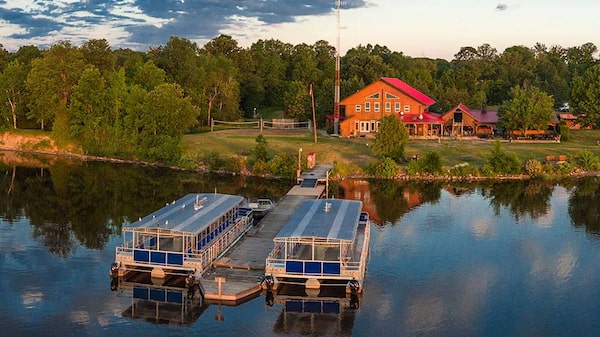
Nature adventure
There are few things more quintessentially Canadian than paddling in local waters. Family-owned Owl Rafting teaches guests the intricacies of white-water rafting, the finesse of canoeing and the importance of this country’s waterways. The company has two locations: one in Ottawa, and one just east of Algonquin Park. Both locations are committed to green practices, including in how they prepare and buy food and in the day-to-day operation of their eco-lodges.
Robert Postma
The epic arctic
Seal River Heritage Lodge is the flagship eco-lodge of tour operator Churchill Wild, where you can experience Arctic safaris. Most daily excursions are conducted by foot to minimize impact on the environment and interference with wildlife. The lodge runs primarily on solar power, operates greywater recycling systems, maintains a strict waste, water and compost program and offers locally foraged foods as well as organic produce grown in a recently built greenhouse in the southern part of the province.
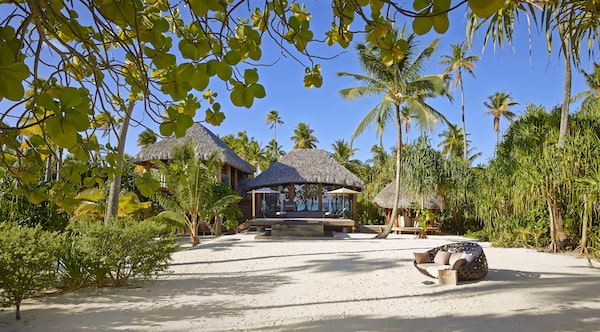
A place in paradise
Taking a “green tour” may not seem like a priority after making the long journey to Tetiaroa, an atoll not far from Tahiti, in the South Pacific. In French Polynesia, air conditioning accounts for 60 per cent of resort electricity bills; the Brando uses sea water air conditioning, chilled water from the ocean’s depths, as the cooling source for its 35 villas. The Brando has the largest solar field in the country, which produces two-thirds of the island’s energy. A generator, fuelled by coconut oil and other biofuels, is used from midnight to 8 a.m. Rainwater is collected and used for laundry, glass is ground and used in paving projects and the compost program is so successful the resort sells its extra to a company in Tahiti.
What about carbon offsets?
Carbon offsets allow travellers to purchase a reduction in greenhouse-gas emissions to compensate for the same amount of emissions produced by their trip.
Carbon offsets are bought and sold through a number of international brokers, online retailers and trading platforms. For example, a wind energy company would sell carbon offsets to help their company create new non-polluting energy, which the buyer would be able to claim mitigates their polluting energy use.
The David Suzuki Foundation recommends the Gold Standard, the highest standard in the world for carbon offsets. Administered by the Gold Standard Foundation, a non-profit based in Geneva, Switzerland, the Gold Standard is now supported by more than 80 non-governmental organizations and focuses on projects in developing countries.
Less Emissions, a Canadian company owned by the green energy retailer Bullfrog Power, prices its carbon offsets by the tonne. Domestic offsets cost $24 per tonne, while international offsets cost $32 per tonne. “If you flew from Halifax to Vancouver and back … that would cost you roughly $40,” says Sean Drygas, president of Bullfrog Power.
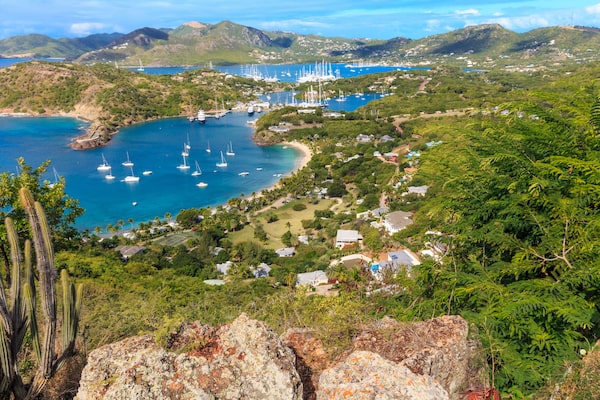
ROBERT ZEHETMAYER/iStockPhoto / Getty Images
Once you’ve arrived
You can make a difference when planning your next trip with informed and sustainable decisions once you’re on the ground.
Share the wealth
Think local when looking for transportation, a hotel, restaurant or tour guide to help tourism dollars benefit the community you’re visiting. Renting a bike can seem like a small step, but it allows you to explore beyond the confines of a vehicle, is less polluting and puts money into the pocket of a local business.
Flex your studies
Use a guide book or official website to research your destination to understand customs, traditions and history before travelling. Learn what to wear when exploring, whether you’re visiting a monument or a local market (remember to bring clothing to cover up when visiting any religious site). Ask a hotel concierge or tour guide for advice on what to pay for local services, such as a ride in a tuk tuk.
Meet the maker
When shopping for souvenirs or handcrafted objects, avoid buying items that could be considered a biological treasure (such as a rare plant or exotic pet) or an antique that may be archaeologically significant. Never buy banned wildlife products such as ivory or a tortoise shell. If you want to go the extra step, be considerate when bargaining, depending where you travel — it’s normal to barter, but don’t fight over pennies.
Think enviro-consciously
Treat your destination as if it were your home. Go beyond avoiding plastic straws or bags and reusing towels by bringing your own biodegradable toiletries in refillable containers — leave behind as little as possible.
Watch what you eat
Choose locally sourced and created cuisine. Try to eat in instead of eating on-the-go — that way there’s less waste from your carry out containers. Avoid supporting chain stores, where you might be missing out on the culture and where more waste may be produced. Pack a refillable water bottle; in areas where bottled water is the only option, consider buying larger bottles to share to reduce plastic waste.
Other resources and websites
To change the way you look at travel, try to seek out designations such as the Green Destination Standard, which sets environmental, cultural and business criteria to measure, monitor and improve the sustainability of destinations and regions.
The Global Sustainable Tourism Council
The GSTC is a comprehensive resource for learning about tourism businesses and destinations that strive to protect and sustain the world’s natural and cultural resources. The council grants voluntary, third-party certification for destinations, tour operators and hotels that want to make sustainability integral to their business plans. The GSTC also suggests a 30-minute online web class, created by G Adventures and Sustainable Travel International, for travellers who want to know more about making the right choices when planning a vacation.
Bee + Hive
This sustainable tourism association launched a booking platform this year to help you find a list of hotels and experiences focused on wildlife conservation, environmental preservation and sharing cultural traditions while also providing economic benefits for communities.
Further reading
More advice
- How to be a conscientious traveller – and other trip advice from G Adventures founder Bruce Poon Tip
- Green your vacation with a trip to the world’s most sustainable city
- Eight ways to be a better tourist this summer
- Fixing the Florida Keys: Locals turn conservation into ecotourism
Opinion
- The high cost of bucket-list tourism - and where you can go to get far from the madding crowd
- The time for sustainability in travel has arrived
- The collision of tourism and climate change
This guide was compiled by Sierra Bein with reports from Gayle MacDonald, Dave McGinn, Maryam Siddiqi, David Moscrop and Waheeda Harris.




 Sierra Bein
Sierra Bein